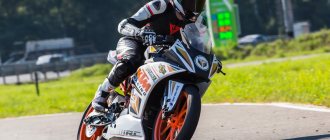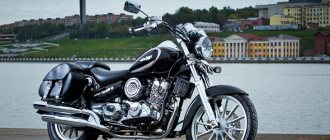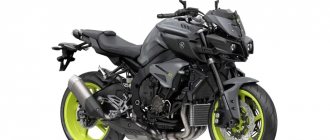- Shadrinsk.Info
The roar of engines, the specific smell of exhaust gases, an ice curtain over the track, wheel-to-wheel fighting, seemingly a violation of all the laws of physics, when motorcycle racers negotiate a turn, practically lying on their sides, fighting a few centimeters from dangerous spikes - all this is an ice speedway.
One of the spectacular sports in Shadrinsk, which attracts a full stadium in frosty weather, can undoubtedly be considered ice speedway. Several times a year, 16 desperate racers take to the track and find out which of them can race four laps around the ice the fastest. If at the dawn of the appearance of speedway such an action could be presented as entertainment, now it is a serious sport. We often talk about the sporting successes of racers, mention teams, but do not ask the question at what cost the ice knights achieve success. We talked about the components of victory with an international master of sports in motorcycle ice racing, winner of the European Championship and World Championship participant Valery Pertsev, who kindly agreed to give us a tour of the workshop of the Torpedo-SHAAZ motorcycle club, where for decades they have not tired of forging victories and produce world-class racers.
MOTORBIKE
– Valery Nikolaevich, what does an ice racer need first of all?
– The first thing you need is a motorcycle. You can’t buy such bikes on the open market,” Pertsev began his acquaintance with the equipment.
From the subsequent conversation it became clear that each of the motorcycles is unique. There are only a few private companies that assemble speedway equipment. They are made from various spare parts, usually imported. Last season, the cost of some copies exceeded half a million rubles. When in recent months the economic situation in the country has changed following the exchange rate, and everything imported has become more expensive, this has hit the teams’ wallets hard.
“A motorcycle can be ideal right away only for beginners,” the European Championship medalist stroked the iron horse. – But when they get used to it and start improving their results, then they will have to improve the characteristics of the motorcycle and tune it.
Frame
– For the manufacture of the motorcycle frame, high-strength steel pipe 30 HGSA is used. Nowadays they mainly use the frame once designed by the Dutch racer Taite Bootsma. With such a frame, Shadri resident Artem Novik became a prize-winner of the European Championship,” Valery Nikolaevich did not fail to remind about the high achievement. – They make approximately the same frame in the Czech Republic.
Some craftsmen make the frame themselves, so to speak, according to a model. It seems that the frames are all the same in appearance, but the motorcycles behave differently. For example, Nikolai Krasnikov tried both the Czech frame and Bootsma, choosing the latter. The frame is hidden by a plastic hood, but if necessary, it quickly folds back and reveals the inside of the motorcycle.
Fork
– Usually a fork is used (a motorcycle device that holds the front wheel - editor’s note) from a cross-country “Cheset”, there are Swedish forks, but they are much more expensive. The forks as sold are not suitable for ice racing and are being tuned to be stiffer. The springs used are as stiff as possible for cross-country. There is a monoshock absorber at the rear, but before there were none at all.
Wheels
– The diameter of the front wheel is 23 inches, and the rear is 21 inches. This is not even immediately noticeable to the casual eye. This was done for better weight distribution and load distribution. Wheels are inflated differently. Front under 3 atmospheres, rear 1.1-1.2 atmospheres. Before each race you have to measure the pressure and pump up the tires.
Spikes
The main thing that catches your eye when a motorcycle rolls out nearby or a rider slowly passes by the spectator stand is the impressive size of the spikes sticking out of the tires. Mechanics stuff the wheels with them so that the motorcycle does not spin on ice and does not fall in turns. According to the regulations, the permissible length is up to 28 mm.
“Basically, in the front wheel you can count 96-120 studs, on the rear wheel there are 180-182 studs,” the World Championship participant continued the story, playing with a handful of studs. – When cornering, the load transfers to the front wheel, so fewer studs are enough. The larger number on the rear is due to the fact that the wheels are driven and they need to bite into the ice better.
– In addition, the studding is asymmetrical. During an oval race, riders move counterclockwise and when turning they tilt their motorcycles on the left side, so more spikes are placed on the left side of the wheel,” Valery Nikolaevich continued the story, pointing out this feature.
– On the rear wheels, the studs are arranged in three rows: the starting one is on the right side of the wheel, the main one is in the center, and the auxiliary one for turning is on the left.
The front wheel is bypassed by the main and auxiliary rows. Previously, they experimented with the location of the spikes. Now everything has settled down.
Fans can watch the riders jump up and down on their motorcycles as they approach the starting point. This is done so that the spikes catch on the ice more strongly, and when the start is given, the wheel does not slip. This technique gives riders greater starting acceleration.
Having so many sharp spikes is as dangerous as a saw blade. For the safety of the riders, the wheels are covered with hoods and iron arches, so that in case of contact they do not cause injury. The hoods also provide some protection from flying ice shards.
Brakes
They simply don't exist. The riders take their hand off the gas and apply the engine brakes. The boots, which also have spikes on the soles, help a little to slow down, although not like the ones on the wheel.
Fuel and tank
– What do they fuel motorcycles with, since the smell of exhaust gases is not gasoline?
– Methanol is used as fuel. Compared to gasoline, methanol has a higher octane number, and therefore a higher compression ratio, and better engine performance. Since the races are short-lived, the motorcycle’s gas tank is small, on average about three liters.
When the start of a race is delayed or a restart is scheduled, at such moments you can see a mechanic running with a canister to a motorcyclist on the track and adding fuel.
Engine
- And instead of a heart there is a fiery motor?
– Czech engine with a volume of 500 cc. cm produces over 60 hp in the factory version. But this is not enough for racers and mechanics are racking their brains on how to improve engine performance: replacing valves, springs, connecting rods with more expensive parts made from lighter and stronger materials. This allows you to almost double the engine power.
The engine operates at its limit and spins up to 10,000 rpm. Of the expensive spare parts, the piston, cylinder and connecting rod wear out the fastest.
The cost of a piston is about 250 euros, a cylinder - 280 euros, a connecting rod - 250 euros. So calculate how much money you need to participate. If you have a good club budget, these parts are changed after 3-5 races. They can continue to be used, but the engine power is no longer the same.
– Valery Nikolaevich, before the start you can see how a mechanic with a screwdriver approaches the racer and begins to twist something. What does it regulate?
– It loosens or tightens the bolts on the clutch. If the rider complains that the motorcycle often bucks, then you need to slightly loosen the clutch. If the start is smooth and constantly “fails,” then you need to tighten it up. So athletes are looking for the golden mean of settings.
If the rider often rides along an internal trajectory, then the engine and clutch must be adjusted so that it quickly accelerates and stops. Those riders who prefer to drive almost at full throttle along the middle or along the outer trajectory use other settings for each riding style, as well as details. But a good racer must be able to ride on any trajectory. So the mechanic is trying to make the motorcycle more universal for the rider. The clutch lasts for a year, only the disc needs to be checked periodically.
– There are several ways to start an engine, tell us about them?
– There is no starter on a motorcycle, why have extra parts on a racing car? Motorcycle, or external starters are used, this can be seen when a mechanic spins the engine like a screwdriver.
– How many gears does a racing motorcycle have?
– The gearbox consists of only two stages. The first one is to accelerate from the start, the main one is racing, it is activated without the usual clutch release.
– How fast can a motorcycle racer accelerate on a track?
– At our Torpedo stadium, we tried to measure the speed in the section after exiting the bend using a police radar. The device recorded that over an arc and 100 meters of a football field, racers manage to accelerate to an average of 117-120 km per hour.
– What is the weight of the motorcycle?
– Assembled about 112-135 kg.
EQUIPMENT
– Valery Nikolaevich, what personal passive safety equipment do racers use?
– A helmet, the cost of which is about 20,000 rubles. Can be purchased at any specialized sportswear store.
The spine protection is popularly called “turtle” due to its external resemblance to armor.
It protects the back and chest. Made from plastic. Some riders wear additional protection around their neck, a kind of collar to reduce stress and lateral overload in the event of a fall.
– Fans may see the riders wearing a clear or dark mask on their face. What does the choice depend on?
– Everything is obvious, in bright sunny weather darkened filters are glued to the glasses, and in normal weather - transparent film. Ice chips flying from under the wheels scratch the film, but not the glass. As soon as visibility becomes poor, the film is torn off.
Overalls
– Unlike the spectators at the stadium wrapped in sheepskin coats and felt boots, the racers wear thin overalls. Therefore, racers try not to stare at their rivals for a long time. For the same reason, the opening ceremony of the competition is not drawn out. Basically, the overalls are made from kevral, a dense and lightweight material. The material is tensile, but it still won’t save you from thorns. It is insulated from the inside with a thin layer of foam rubber.
Gloves
– Finnish manufacturers have come up with special gloves for speedway, covered on top with plastic plates to protect against impacts from ice fragments. Some racers don't shy away from using cross-country gloves.
Shoes
– The rider’s leg equipment is different. What?
– Racers wear motorcycle boots on their feet for cross-country or road racing. Since the rider practically lies on the ice when cornering, additional knee, shin, ankle and foot protection is worn on the left leg.
This saves you from hitting the ice. Expensive protection is made of corbon - light and strong, but often racers use budget plastic ones. During a race, a knee pad really saves you from injuries, but sometimes it happens when you hit a pothole and it hurts your leg, resulting in bruises. Everything else for victory is in the hands of the riders.
Photo by the author.
Stanislav Fiskov January 27, 2015, 00:44
In the world of motors, motorcycle racing, speedway
← “Test drive” of students Semi-final of the Russian personal championship in motorcycle ice racing 2015 →
Tweet Share with friends
NOT FINISHING THE SERMON.
Cinder track racing, or simply speedway, appeared at the beginning of the twentieth century, and almost all countries became afflicted with it amazingly quickly.
The year of birth of the species is considered to be 1923, when the Australian John Hoskins, who had a government-issued motorcycle at his disposal, decided to have a blast in the company of friends. There was no better place for racing than the local racetrack. Everything would have gone unnoticed if it weren’t for Sunday and the nearby church. The roar of engines drowned out the sounds of the church organ, and the parishioners, having forgotten about the service, rushed towards the sound. These were the first spectators of a new type of motorsport. Hoskins himself was at first frightened by the sold-out crowd, but he got the hang of it, and thanks to his efforts, within a couple of weeks “races at the hippodrome” were being talked about throughout the area. Motorcyclist races became regular, and enthusiasts began to develop speedway rules. Gradually, the geography of the competition expanded, and soon it became crowded on the Australian continent. Europe was next in line.
In the Northern Hemisphere, the first race took place in 1928 on the islands of Foggy Albion, and already in 1929 the first team league appeared in England. Soon teams and championships began to be organized across the continent.
Currently, cinder track racing is most popular in Poland, England, Sweden, Denmark, the Czech Republic and Russia. Among the top class racers there are both Americans and Australians. However, their main place of work is Europe: today the Old World is the center of the world speedway. There are many leagues and championships in which athletes from all over the world and at different levels have the right to compete.
Wreckless Motorcycles
This unusual Ducati speedway custom comes courtesy of Wreckless Motorcycles founder Rick Gill, who has a passion for truly unusual motorcycles. For example, Rick is probably the only person who has ever customized an Aprilia Moto 6.5. In the 1970s, young Rick and his family came to Denmark for the holidays.
And there I became interested in speedway,” he admits. -I loved watching Ivan Major, Peter Collins or, for example, the Danish athlete Ole Olesen win races and world cups.
EXTREME CAR
From a technical point of view, speedway is very different from other types of motorsports. What exactly? Racer of the Latvian Speedway Center club, European vice-champion among juniors Kestas Puojuks will help you figure it out:
— A speedway motorcycle is a composition of a minimum set of parts and assemblies that ensures that the rider gets from start to finish in the shortest possible time. The controls are only the clutch lever and the throttle. The engine is a single-cylinder, 4-valve, 500 cc, with a maximum speed of about 10,000–11,000 rpm, depending on the modification. Speedway engines are produced by two companies: the Czech Jawa and the Italian GM. There is only one gear, which simplifies the entire design. For training, especially at the initial stage, they use 125 cc cars, but for “adult” training and especially racing - only “five hundred”. Moreover, for high-level competitions, tuned engines are installed. For example, Finnish craftsmen were involved in fine-tuning mine. Using their proprietary secrets, they achieve some improvement in engine performance. In what case and what engine to use is decided by the athlete himself, depending on the situation: it all depends on the composition of competitors in the race, on its rating. If it is low, then no one will waste the potential of the tuned engine.
The sore spot of a speedway car is the chain. She experiences very high loads, so her condition needs to be constantly monitored. A new chain is never used in a race: a new one is a “dark horse”. And a chain break is a fairly common reason for a rider leaving the track. First, she is tested in training, carefully examined, and only after that she is “allowed” to take part in the race.
As for the suspension, the motorcycle has only one shock absorber - in the front fork. Its design is quite extraordinary compared to conventional bikes. It serves more for better handling of the motorcycle than for comfort. The rear wheel is rigidly fixed to the frame: since it skids most of the route, it does not need unnecessary vibrations.
In general, the rear wheel deserves a separate story. But in short, it almost always slips (and “from the heart”) both at the start and when cornering. Therefore, the tire has to be screwed to the rim with self-tapping screws so as not to tear it off. Due to such harsh conditions, the cylinder is only enough for two races. In the first, the left half of the tread is ground off - the tire is turned, the remaining “half” is enough for one more race. After the competition, the slick is either thrown away or kept for training.
Types and features of track disciplines
Classic speedway
Classic track motorcycle racing is held on a circular track with a cinder surface. The length of the ring is from 260 to 400 m, just like a regular running track at the stadium where the first speedway competitions were organized. Due to the short length of the track, the race consists of 4 (less often 5) laps, while the width of the track allows 4 riders to start at the same time.
Initially, the World Championship was built on a system of qualifying rounds, in each of which riders received points depending on their place. As a result of the selection, 16 athletes advanced to the final, which consisted of 20 races. The winner was the driver who scored the maximum number of points in total after all 5 races of the final stage. In the event that at the end of the race several participants had an equal number of points, they were all declared winners.
The system for selecting participants changed in 1955, when the FIM took over the organization. Qualification took the form of zonal competitions: athletes no longer had to travel to England for qualifying races, as they began to be held in other European countries. The World Cup final in 1961 also left its usual London and began to change its venue from year to year.
Another significant change was made to the holding system in 1995. From this year, the champion was determined not by the results of the final race, but by a 6-stage world Grand Prix. Each stage consisted of the usual 20 races (each driver took to the track 5 times) and was supplemented by a final additional race designed to distribute the riders who received the same number of points.
By the way, the number of points received by each athlete depended on the place he occupied. So the winner of the stage received 25 points, the silver and bronze medalists - 18 and 16 points, respectively, and so on down to the participant in the last 16th place, who received only 1 point.
In 2007, this method of calculation was abolished, and the results began to be based on points scored by participants directly as a result of races.
Grossspeedway
In fact, grossspeedway is a complete analogue of classic track motorcycle racing, except for the size of the track. Instead of running tracks, hippodromes were initially used to organize it, so the length of one circle reaches 1 km. Great freedom of movement allows 6 athletes to participate in the race at once.
Motorcycles for speedway technical characteristics
The roar of four-stroke engines, splashes of ice, wheel to wheel struggle, impossible from the point of view of gravity. The riders lay down their bikes so boldly, so fearlessly rush to overtake, almost lying on the ice, just a few centimeters from the spiked wheels of the opponent’s motorcycle. The ice speedway is an amazingly spectacular event that consistently attracts full stadiums in the coldest weather. One oval covered with a thick layer of ice, four laps and tension until the very last race! Ice speedway has also won a special love among us because all the top lines of the world rankings in this type of motorsport are occupied exclusively by Russian pilots. Perhaps the only sport where we really have no equal, and - what a coincidence! - the craziest.
It’s hard to say now who was the first to think of sending a motorcycle to an ice track. Of course, at first such know-how was purely entertaining in nature - ice motorcycle racing turned into a serious sports discipline much later. In the 20s of the last century, the Scandinavians came up with the idea of competing on two-wheelers in weather conditions that were not entirely suitable for this. However, as soon as the sport received the status of international competitions, the ancestors of speedway were almost immediately forgotten: desperate guys from the USSR entered the arena and showed the whole world how to defeat their opponents. The first official world championship was held in 1966, and since then only seven times the championship has gone to foreign riders.
Where are the strongest motorcycle racers?
Representatives of the Russian Federation are undeniably leaders in this discipline. In Russia, motorsports receive government support. In the budgets of many regions there are provisions for assistance to relevant clubs and schools. In the Sverdlovsk region and Togliatti there are special schools for children and youth where very young motorcycle racers train. From the age of five they ride special small bikes. Here they gain initial skills, then choose one of the types of motorsports they like.
Many clubs are budget organizations. The club provides the rider with a motorcycle, a mechanic and wages, and pays for business trips to competitions. In addition, spare parts and everything necessary are purchased with the allocated funds.
There are no training sessions as such. Training camps begin at the end of November, when ten days of pre-season training take place. Then the competitions begin, which are usually organized on weekends, and between races the athletes move to different cities.
There are no clubs abroad, and athletes train on their own. They purchase spare parts themselves and assemble motorbikes in their garages. This is the reason that not many people are involved in motorsports abroad, which is why the competition is lower.
The Russian Championship is definitely the strongest motorcycle racing in the world. Getting into the top five at the Russian Championship is harder than being in the top five at the World Championship. And if in Europe races are organized once a year, then in the Russian Federation they are organized constantly. In addition, winter cold comes here earlier, and racers from different countries come here for training camps, to participate in competitions and, of course, to borrow the experience of Russian pilots.
How to choose a motorcycle for speedway
One of the types of motorcycle sports is speedway.
The competition involves four drivers who move around an oval-shaped track in a counterclockwise direction. A motorcycle used in a speedway has only one gear to move forward and has no brakes.
The track has an oval shape with a smooth cinder surface; in winter it is icy. Its boundaries are marked with white lines; if a rider crosses them, he will be disqualified.
This type of motorcycle sport is popular in Europe, less so in North America and Australia. In Russia, ice speedway is more popular.
According to FIM (International Motorsports Federation) regulations, the minimum permissible weight of a speedway motorcycle must be 77 kg. At first, the engines were located vertically, but nowadays riders have begun to use a technique with a horizontal engine position under the frame, which helps to better control the bike.
The engines are single-cylinder, four-stroke, with a volume of 500 cm³; for youth performances, engines with a volume of 250 and 125 cm³ are used. Fuel the motorcycle with methanol (ethyl alcohol).
There is only one gear for movement and it is used at the start; the motorcycle does not have brakes. If necessary, reduce the speed using the throttle. Suspension is present only on the front wheel.
Depending on the track, a different gear ratio is used; for this, the driven sprocket changes. The rear wheel has a mudguard and a mud deflector. The footrest is only present on the outside.
The FIM strictly controls the design of the motorcycle:
— it should not contain titanium parts;
— there are no electronics for control;
— a prerequisite is the absence of brakes;
— no turbocharger or supercharger;
— the use of telemetry is prohibited during racing. Motorcycles must have an engine switch installed.
The motorcycles used in ice speedway are completely different from those used in classic speedway racing. The engine has not four valves, but two. The motorcycle has two gears, the first is for starting and accelerating to the desired speed, and then the second is engaged without squeezing.
A low flat frame is installed, slightly elongated, the fuel tank is small - 2-4 liters. No aerodynamic fairings. There are both suspensions, both rear and front.
The main difference between motorcycles is the use of studded wheels. There must be a front fender and a hood covering the rear wheel.
A little history
The very first motorcycle races, or more precisely, races involving motorcyclists, were long-distance races that took place along public roads connecting large cities. Their main goal was to prove that the motorcycle, which had only recently seen the light of day, was a completely promising vehicle. However, this method of attracting public attention was quite poor: it was simply impossible to follow the race. All the viewer could do was watch the participants pass by for a few seconds and later read the results published in one of the newspapers.
However, the public still managed to interest the new two-wheeled vehicle and its impressive (for those times) speed. The real breakthrough in popularity was suddenly associated not with an increase, but, on the contrary, with a decrease in the scale of racing that occurred in the 1920s. In addition to the rapidly growing motocross competitions, they began to be held at regular racing stadiums or racetracks - hence the relatively short lap lengths.
Such a decision had a fairly impressive list of advantages for absolutely everyone involved in the competition: from organizers and racers to spectators:
- the tracks practically did not require additional equipment, which means that organizing a race was relatively simple,
- the simple shape and flat surface of the track allowed us to confidently increase the power of motorcycles, making participation more interesting and exciting,
- the track was perfectly visible from the stands, so spectators could easily watch the struggle of the racers throughout the race,
- The races were spectacular, but short enough to not get boring.
As a result, all this resulted in the emergence of the so-called classic speedway and the holding in 1936 of the first World Championship, held in London under the auspices of the International Federation of Motorcycle Clubs (FICM). Subsequently, it began to be held annually.
As for the history of speedway in the Soviet Union, despite our country lagging behind Europe in terms of technical development, speedway was very popular. The first Russian Championship was held at one of the Moscow hippodromes already in 1920. Subsequently, the competitions were moved to football stadiums, and the Championship was renamed the Soviet Union Cup. It was held until the Second World War, which interrupted the development of motorcycle sports not only in our country, but throughout the world.
However, this does not mean at all that by that time the speedway had finally taken shape and remained unchanged to this day. On the contrary, the direction and the technique used in it continued to develop, which led to the emergence of new types of competitions.
See also
Many lovers of speed and excitement prefer to ride motorcycles. A motorcycle is not only a means of transportation, but also an opportunity to achieve aerobatics by performing stunts and driving a bike at high speed. Such transport creates a special image and style
The word speedway is translated from English (speedway) as a high-speed road, and specifically implies motorcycle racing as one of the sports. There are different types of track motorcycle racing: on dirt and grass, long track racing, motorcycle racing
Speedway is a special sport that requires careful attention to the conditions of its preparation and the creation of appropriate racing cars. The Motorsports Federation has established certain standards regarding the design of motorcycles and including safety regulations. A speedway track should be
As a rule, a full set of high-quality motorcycle equipment costs a lot of money, but, nevertheless, it is the equipment that is responsible for preserving the health, and sometimes even the life, of the rider. The main piece of speedway equipment is a protective helmet. This piece of equipment is intended
Controlling a motorcycle on straight sections is no different in racing on ice and cinder surfaces. It varies when turning. The motorcycle is started immediately, preferably with two pushers. The pushers accelerate the car. Sitting in the saddle, the rider squeezes
Racing Rules
The competition rules here generally do not differ from classic speedway:
- 4 riders participate in one race - as a team or individually.
- Each athlete must complete 4 laps around the track. Thus, the maximum distance length is no more than 1.7 km (425 m x 4).
- The winner is the one who reaches the finish line first.
- If a series of races is held as part of the championship, then the drivers are awarded points: first place - 3, second - 2, third - 1, fourth - 0. The winner is determined by the sum.











